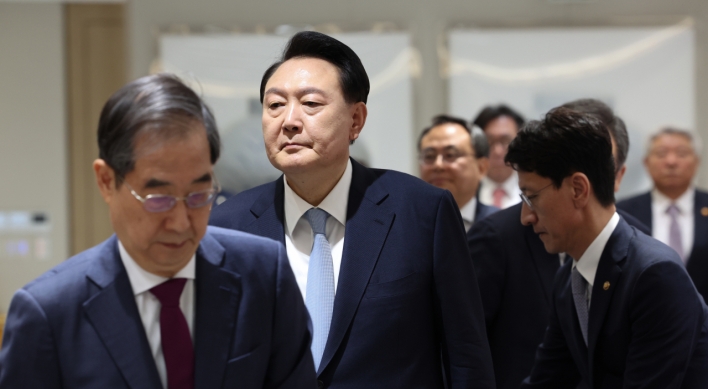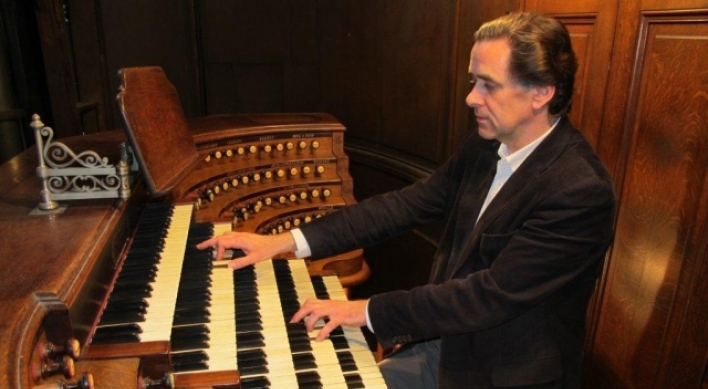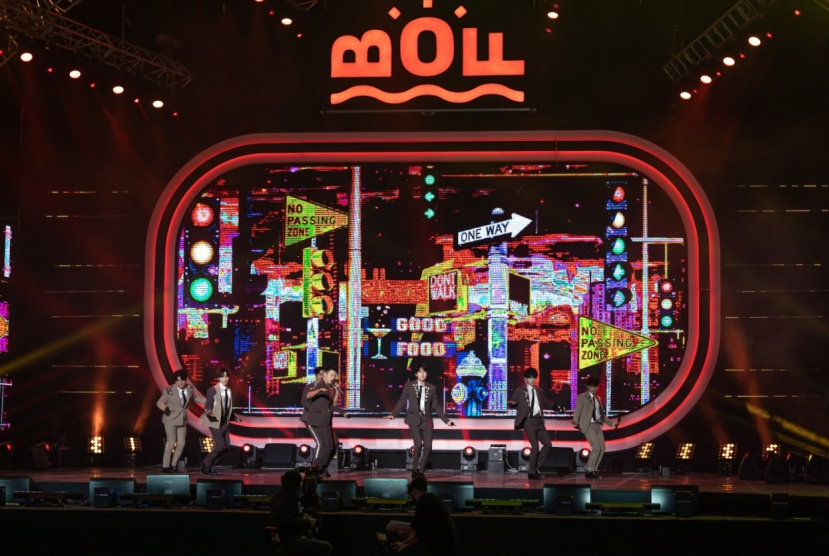[From the Scene] Nuri rocket gears up for 1st space delivery
S. Korea’s homegrown space launch vehicle aims to put 8 satellites into orbit on May 24
By Kan Hyeong-wooPublished : May 7, 2023 - 16:22
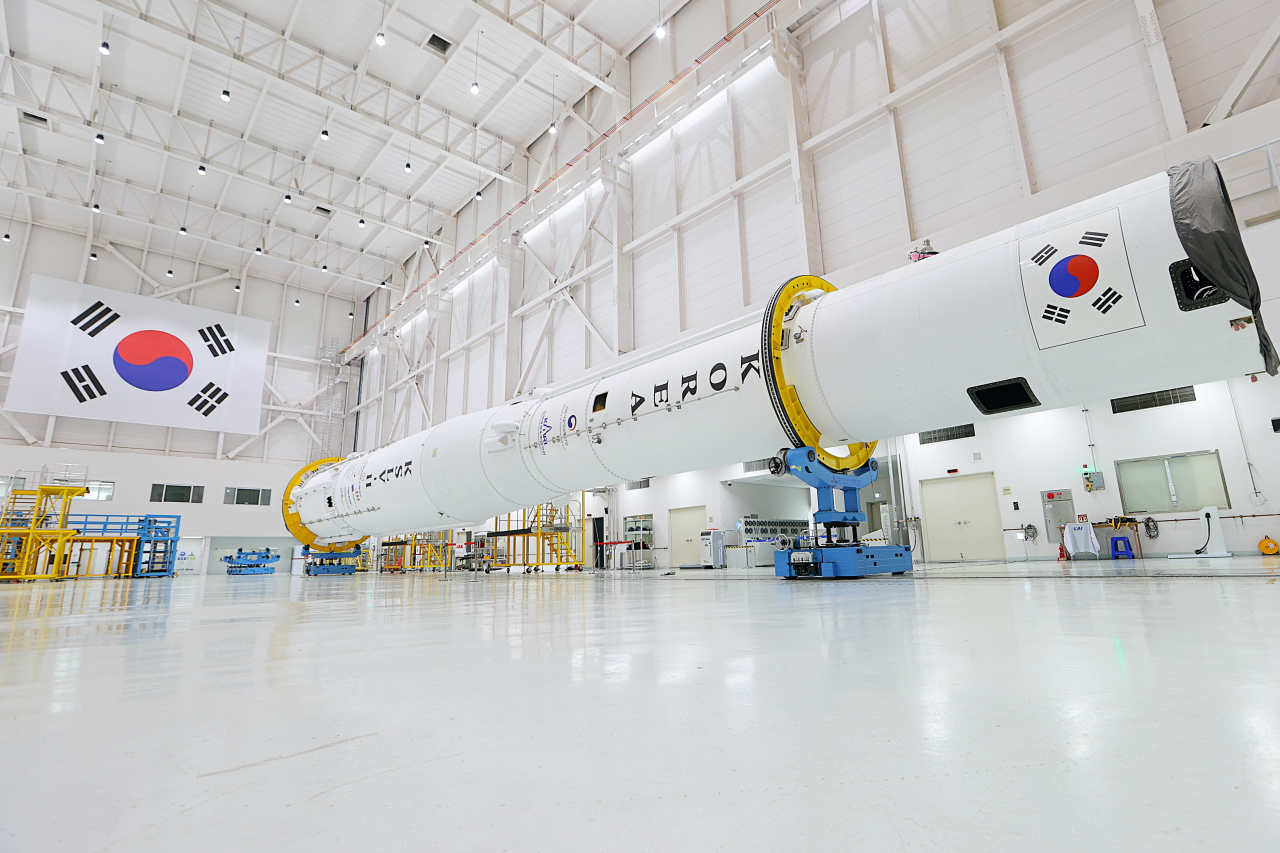
GOHEUNG, South Jeolla Province -- South Korea’s homegrown Nuri rocket, also known as the Korea Space Launch Vehicle-II, was waiting for the arrival of the satellites that it will carry into orbit later this month at the Naro Space Center in Goheung, South Jeolla Province, on Wednesday. Successfully placing the satellites into the targeted orbit will be key for upcoming launch as the Nuri rocket readies for its third flight.
“The first and second launches were about developing capabilities. The third launch is more about advancing the technology. It aims to serve as a stepping stone to enhance our technology by increasing the level of trust in our launch vehicle,” Lee Sang-ryool, president of the Korea Aerospace Research Institute, told reporters during a press briefing at the Naro Space Center.
“The third launch will carry eight satellites and mark the first time for us to launch our customers into space with our own launch vehicle. We have always had to use other countries’ launch vehicles, having taken part in the launch as customers only,” he said.
The Nuri rocket’s third launch is scheduled to take place on May 24 at the Naro Space Center. The first trial fell short of success as it failed to put a dummy satellite into orbit in October 2021. The second attempt made history in June 2022 as Korea became the seventh country in the world to have indigenous technology put a satellite weighing 1.5 tons or heavier into low Earth orbit between altitudes of 600 and 800 kilometers.
The second launch, however, only carried performance-testing satellites, cube satellites and dummy satellites. The third launch will carry a next-generation small satellite developed by the Satellite Technology Research Center at the Korea Advanced Institute of Science and Technology to test multiple space technologies such as synthetic aperture radar and space radioactivity observation.
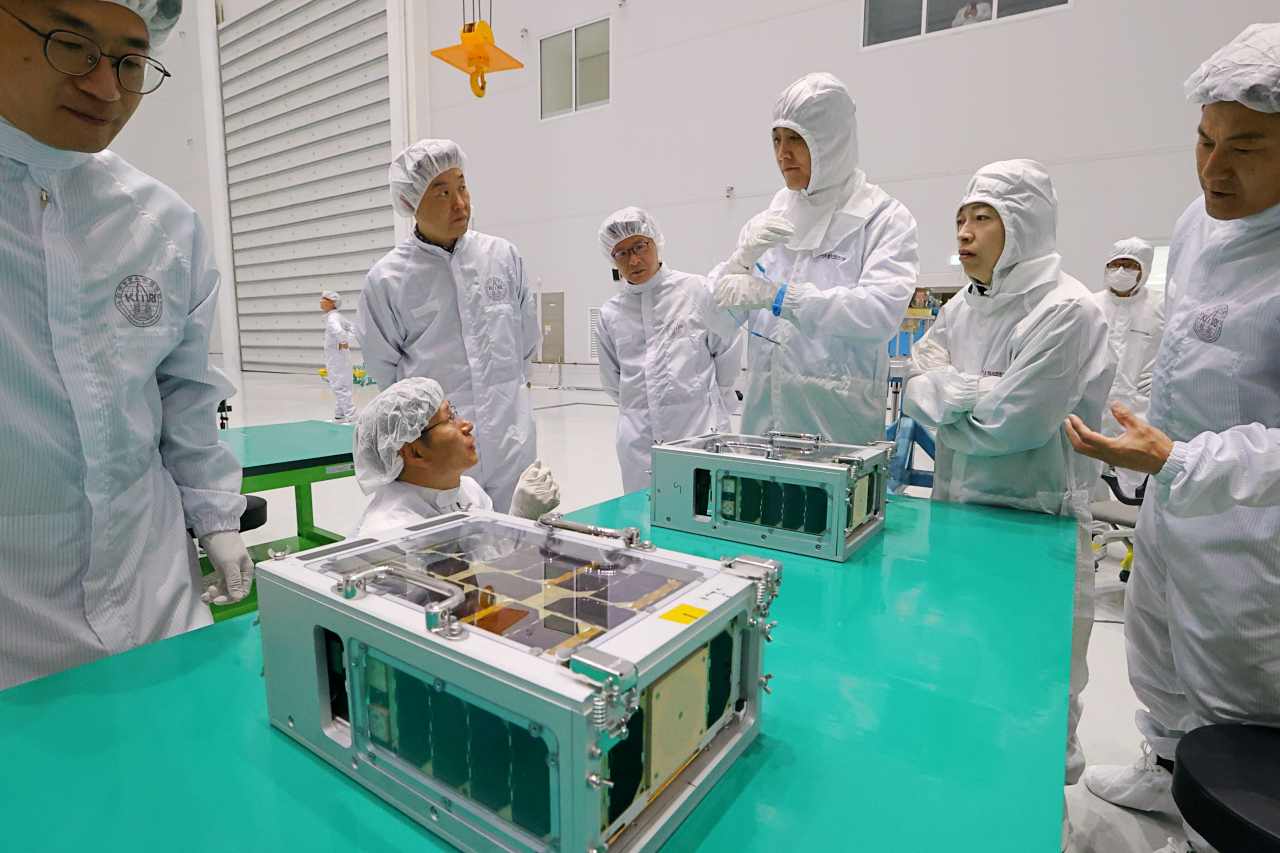
The third launch of the Nuri rocket will also be the first launch since Hanwha Aerospace won the bid to take charge of the government project to advance the KSLV-II and grow it into a system integration company capable of overseeing the entire launch process, including the assembly of the rocket and launch operations. With three more launches of the Nuri rocket slated until 2027, Hanwha will continue to expand its role to lead the overall operation.
According to Ko Jeong-hwan, a KARI principal researcher and the current head of the Nuri rocket project, the first and main payload -- the next-generation small satellite -- will be shot out into orbit at an altitude of 550 km from the rocket 789 seconds, or 13 minutes and 9 seconds, after the blastoff. Following the first shootout, the seven cube satellites will be ejected individually from the rocket with a 20-second interval between each of them.
“The reason for the 20-second interval is that we designed the flight sequence to put the satellites at different speeds in order to ensure a safe distance between (them),” said Ko.
The seven cube satellites were developed by the state-run Korea Astronomy and Space Science Institute and three private companies: Lumir, Justek and Kairo Space. Ko explained that they were selected via an open application process by the government to offer a free chance for local satellite developers to put their products into orbit.
As for the preparations for the third launch, the three-stage Nuri rocket will be completely assembled two days ahead of the launch date. The rocket will be transported to the launch pad the day before the launch.
The weather turned gloomy as the reporters carried on with the on-site tour of the Naro Space Center. It eventually started to rain as the group arrived at the launch pad.
“Rain does not mean that we cannot conduct the launch. The impact of wind and lighting is much bigger. The wind, especially, is the most important factor. We will check the speed of the wind on the morning of the launch to determine whether to go ahead with the plan,” said Kang Sun-il, a KARI researcher.
The Nuri rocket’s second launch was postponed due to strong winds at the launch site last year.
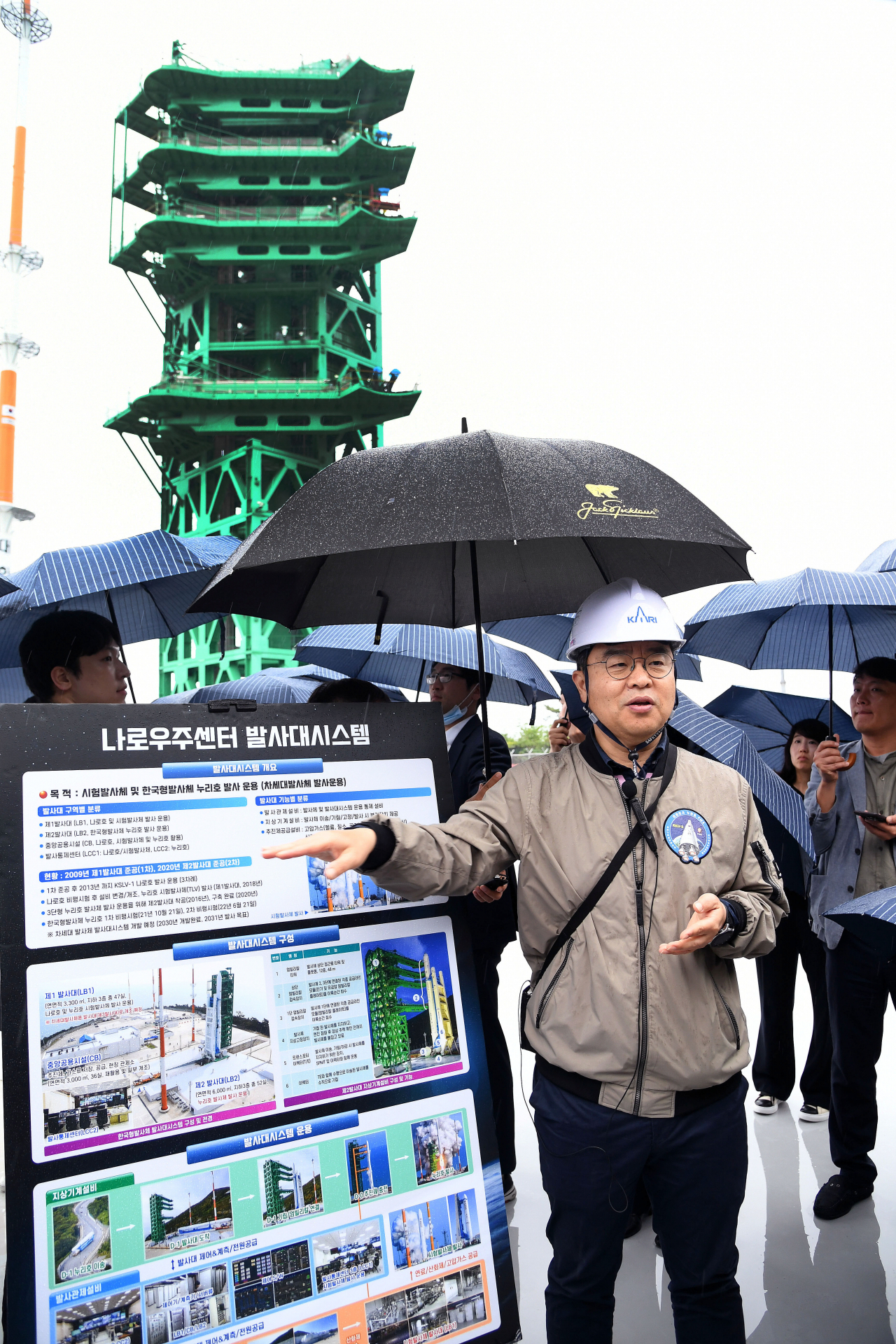







![[KH Explains] How should Korea adjust its trade defenses against Chinese EVs?](http://res.heraldm.com/phpwas/restmb_idxmake.php?idx=644&simg=/content/image/2024/04/15/20240415050562_0.jpg&u=20240415144419)






